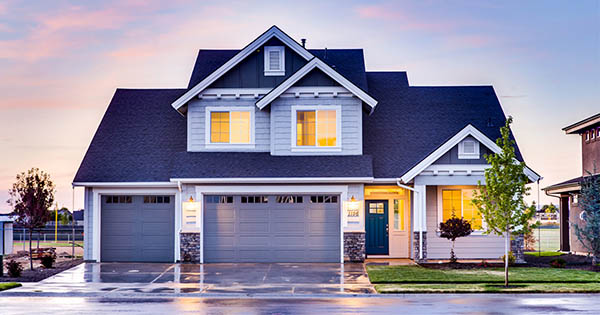Mortgage Insurance
No one wants to pay Mortgage Insurance! It is a seemingly unnecessary, and certainly an unwanted additional cost to a monthly mortgage payment. So what is it, why do we have it and why do we have to pay it?
In this blog post we will be covering:

Lenders want to make loans to borrowers who have a high probability of paying back the money they borrowed. This is not a shocking revelation. Lenders will go out of business very quickly if they are not prudent about the loans they make. And if borrowers stop making their payments, the lender wants to know that there is enough equity in the security property to cover the amount of the loan.
One way lenders can do this is to require that the borrower has skin in the game. This comes in the form of a large down payment. The more skin in the game, the less likely the borrower is to walk away and stop making the payments. Also, a higher down payment means a lower loan-to-value (LTV) ratio so that in the event the borrower stops paying, the lender can sell the property at a foreclosure auction and recoup the full loan amount. Fannie and Freddie, the two major buyers of US mortgage debt, have dictated that the appropriate amount of loan-to-value ratio is 80% (20% down and 80% loan).
But, what if a borrower wants to buy a home with less than 20% down? People do it everyday. In fact, the minimum down payment for an FHA loan is 3.5% and the minimum down payment for a first-time buyer conventional loan is only 3%. According to a March 2019 Urban Institute Report the average LTV ratio for first-time buyers is about 91%.
How are lenders able to make these risky, low down payment loans without going bankrupt? The answer is by using mortgage insurance (MI) to reduce the lender’s risk. MI is insurance paid for by the borrower that insures the lender if the borrower defaults on the loan. If the borrower defaults on the loan, the MI company covers part of the loss for the lender. The borrower gets the benefit of a lower down payment, but must pay the MI premium to insure against the risks associated with the lower down payment.

Borrower-paid monthly MI is when the amount of the premium is divided into monthly payments. It is paid as a part of the monthly mortgage payment. Lender paid MI is when the lender pays for the mortgage insurance. A portion of the cost of the insurance is passed on to the borrower through a slightly higher interest rate. Up-front MI is where the borrower pays a one-lump-sum upfront that pre-pays the MI for the life of the loan. In some cases the up-front MI can be added to the balance of the loan rather than being paid out of pocket by the borrower.
FHA mortgage insurance acts and costs different than conventional loan mortgage insurance. The borrower is required to pay an up-front mortgage insurance premium of 1.75% of the loan amount. So for a $200,000 loan, the up-front mortgage insurance would be $3,500. The up-front MI can be added to the loan balance and paid off over the life of the loan. FHA also requires that the borrower pay annual mortgage insurance in the form of monthly payments.
For 30-year FHA loans originated after June 2013 with an LTV ratio of 95% or higher, the required annual mortgage insurance is .85% of the loan amount. So for a $200,000 loan, the monthly mortgage insurance payment would be $141.67 (200,000 x .0085 / 12 = 141.67). FHA loans require the borrower to pay the annual mortgage insurance premium for the entire life of the loan regardless of the change in LTV ratio in the future. The only way to remove the annual mortgage insurance premium is to either pay the loan off or refinance into a different loan type.
Conventional loan MI is not set at a fixed rate, but rather it is based primarily on FICO score and LTV and it is subject to market forces much like interest rates. A high LTV (3% down) loan with a low borrower FICO score (~630) can see an MI premium as high as about 1.80%. On a $200,000 loan, that would translate into a monthly borrower-paid MI payment of $300. Conversely, a lower LTV (85%), with a high FICO score (~740+) and good credit, could see an MI premium of about .20% or $33.33 per month on a $200,000 loan.
Conventional loans do not require up-front MI. But borrowers will have the option of paying MI up-front as opposed to monthly. Borrowers can also choose to have the lender pay the mortgage insurance for them in return for paying a slightly higher interest rate to the lender.
Conventional loan MI will automatically be removed and no longer required once the loan has been paid down to a 78% LTV ratio of the original purchase price. The borrower may request the MI be removed sooner using the current value of the property rather than the original purchase price. There are some time and procedural guidelines that must be followed and it is best to make this request to the loan servicer in order to successfully remove the MI.
Lower and middle income borrowers will qualify for HomeReady and Home Possible conventional loans which are special loan programs designed to reduce the mortgage insurance premium.

If the conventional loan for the same borrower has an interest rate of 4.875% and MI of .32%, the total cost including MI is 4.875 + .32 = 5.195%. Here, the loan with the higher interest rate is actually the better choice because the MI is so much lower. Also, the borrower has the ability to eventually have the MI removed from the conventional loan as opposed to the FHA loan.